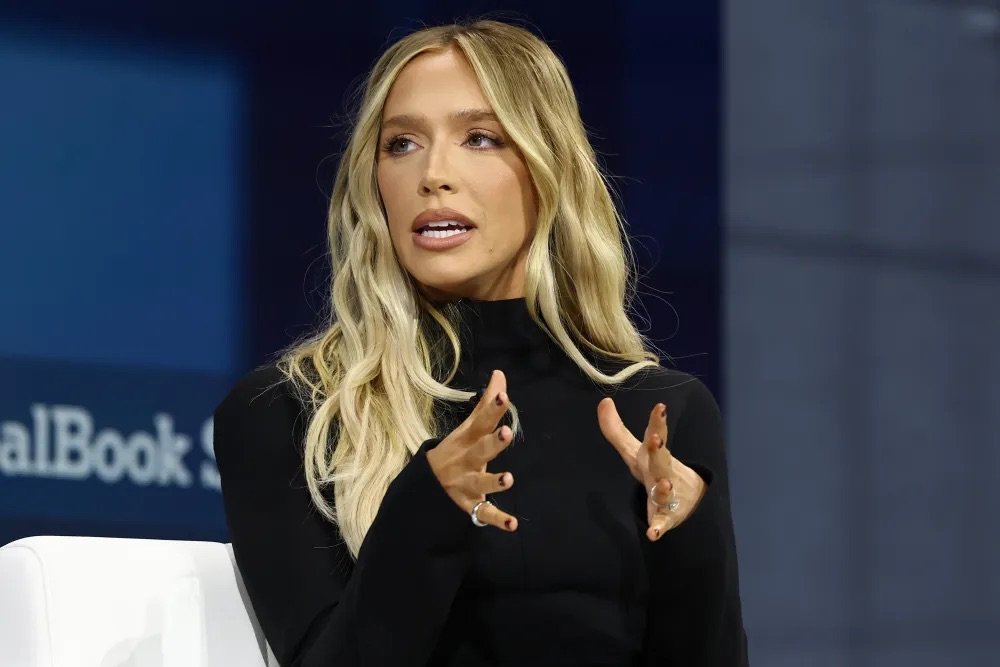Creator Money Is Growing 5X Faster Than Hollywood's. Here's How to Get Yours
Getty Images
An Analytical Examination of Revenue Acceleration in the Creator Economy Relative to Legacy Media
The creator economy, long emerging as a dynamic alternative to legacy entertainment institutions, has now assumed a dominant trajectory of growth that demands academic and industrial attention. According to an empirical study conducted by the Interactive Advertising Bureau (IAB) in collaboration with Harvard Business School professor emeritus John Deighton, the number of individuals operating as full-time creators in the United States has increased to 1.5 million—a sevenfold rise since 2020. This exponential increase is attributed to a marked reallocation of advertising expenditures from conventional media to digital-native platforms, and the relatively low infrastructural requirements for entering digital content production.
Perhaps most striking is the finding that revenue generation from creator-led media is proliferating at a pace five times that of traditional entertainment entities. This shift underscores a paradigmatic redefinition of what constitutes viable media entrepreneurship in the 21st century. Consequently, this raises key questions about monetization modalities, scalability, and long-term sustainability for emerging and established digital content producers.
In seeking to interrogate these issues, I consulted a cross-section of digital agents, creator economy consultants, and platform strategists. The unanimous perspective articulated was that successful creators increasingly conceptualize themselves not as mere influencers, but as vertically integrated media enterprises. These individuals and their teams are optimizing across a multifaceted revenue matrix while leveraging global reach and emergent monetization frameworks.
Deconstructing the Contemporary Creator Revenue Architecture
Sophie Rain
Though advertising remains a principal revenue component, strategic creators are increasingly hedging against volatility and platform dependence by constructing diversified income portfolios. These revenue channels have become both more numerous and structurally complex, echoing the operational frameworks of legacy media enterprises. This new paradigm allows for more stability, scale, and asset-building over time. One of the most extreme cases is that of OnlyFans creator Sophie Rain, who revealed she has amassed $50 million in net profits by age 20—demonstrating the staggering upper limits of monetization for creators with effective brand positioning and loyal subscriber bases. Rain’s stated goal of doubling her profits within the next cycle underscores the entrepreneurial mindset many top creators now adopt. These revenue streams include but are not limited to:
Strategic Brand Collaborations: Still dominant, particularly for mid- to large-scale audiences, with nuanced contract structures involving IP licensing and multi-platform integration.
Subscription and Direct Patronage Models: Via platforms such as Patreon, Substack, OnlyFans, and Discord, creators develop monetizable parasocial relationships.
Affiliate Revenue Systems: Particularly lucrative in sectors like beauty, consumer tech, and wellness, affiliate income is increasingly SEO-optimized and algorithmically driven.
Licensing and IP Monetization: A mechanism through which creator IP is deployed by third parties in exchange for licensing royalties.
Podcasting and Audio Publishing: Low overhead and high listener engagement make this a scalable, high-ROI avenue.
Experiential Economy Integration: From physical events to digital seminars, creators are increasingly expanding into the ticketed-experience economy.
E-commerce and Merchandise: Despite logistical complexity, for creators with loyal audiences, physical products remain a meaningful revenue driver.
Platform Incentivization Schemes: Monetization initiatives such as the TikTok Creator Fund or YouTube Shorts Bonus continue to play ancillary, though often modest, roles.
"The most impactful creators are no longer simply content producers; they are de facto media conglomerates," observes Bennett Sherman, digital agent at WME. "They possess executive-level strategic vision and brand-operational agility."
Market Benchmarks: Quantifying Brand Collaborations
More than 19 million users have subscribed to the MKBHD channel
Credit: instagram/@mkbhd
Compensation for branded campaigns demonstrates significant heterogeneity, with engagement fees scaling dramatically based on audience size, engagement rate, and creator professionalism. Entry-level creators (defined here as having fewer than 10,000 followers) typically command $500–$1,000 per engagement. Mid-tier influencers (50,000–500,000 followers) negotiate rates ranging from $2,000 to as much as $30,000, particularly when the brand integration includes usage rights and cross-platform deployment. High-tier creators (those exceeding one million followers) frequently secure six-figure sums per campaign, with compensation sensitive to factors such as geographic exclusivity, licensing duration, and residual monetization through evergreen content syndication.
Current market analysis reveals that creator rates often diverge by tens of thousands of dollars for ostensibly similar audiences—a phenomenon attributable to brand fit, demonstrated ROI, and strategic negotiability by seasoned management. For example, beauty influencer Meredith Duxbury and tech YouTuber Marques Brownlee reportedly command very different rates despite similar subscriber counts, due to disparities in perceived authority, content production value, and historical campaign success.
Outliers like Dave Portnoy exemplify this dynamic at the extreme end of the spectrum. While his audience spans multiple platforms and formats, the Barstool Sports founder’s dealmaking power derives not only from scale but from brand integration efficacy and conversion metrics. His model illustrates the premium placed on creators whose brand identity transcends content alone and enters lifestyle territory—a position that enables cross-platform monetization strategies including paid subscriptions, merch drops, live events, and venture-backed consumer products.
Economies of Scale: Defining "Full-Time" Viability
Credit: Slaven Vlasic / Contributor / Getty Images
Economic independence via content creation generally materializes once annualized revenue stabilizes within the $60,000–$100,000 range, enabling creators to cover both operational costs and personal expenses with a degree of financial autonomy. Upon surpassing the $150,000 income threshold, many creators begin to formalize their business structures, frequently engaging talent agencies, legal counsel, and business managers to orchestrate deal flow, oversee licensing and merchandising agreements, and broker partnerships with premium brands or platforms.
Pathways to sustainability are increasingly multifaceted. For instance, creators embedded within subcultural or identity-based verticals often cultivate monetization ecosystems through deep audience resonance and high-engagement community-building practices. In contrast, virality-dependent creators operate within more volatile revenue matrices tied to algorithmic exposure and platform incentives. Across both models, however, income durability is most consistently realized through diversification—an approach exemplified by extreme outliers like Dave Portnoy, who leveraged digital virality, content proliferation, and a strategically branded media empire (Barstool Sports) into an enterprise valued in the nine figures. Portnoy’s trajectory illustrates the upper limit of creator scalability when audience loyalty, monetization strategy, and entrepreneurial acumen converge at scale.
The Entrepreneurial Dilemma: To Launch or License?
MrBeast and his Feastables chocolate bars. Feastables
While notable successes in the creator-founded brand space (e.g., MrBeast’s Feastables) are frequently highlighted, industry veterans caution that the capital, logistics, and customer service requirements of DTC entrepreneurship are nontrivial.
For creators with high income via brand deals, the cost-benefit analysis often favors licensing or white-label models. These approaches offer revenue upside with significantly less operational complexity and liability.
POPULAR ON THE CINEMA GROUP
Strategic Growth Arenas: The Next Frontier
GETTY
To ensure long-term competitiveness, creators must engage emergent growth sectors that promise disproportionate returns. These include:
Voice-First and Audio-Based Content: Platforms such as Spotify, Audible, and YouTube Audio represent scalable low-cost/high-return opportunities with enduring listener engagement metrics.
Experiential Commerce: Beyond ticketed shows, the proliferation of creator-led retreats, seminars, and physical activations reflects the fusion of content and commerce.
Internationalization and Localization: With expanding digital penetration in LATAM, India, and Southeast Asia, creators who adapt linguistically and culturally can tap into under-monetized markets with exponential upside.
With the highest-earning creators such as MrBeast reporting annual revenues exceeding $85 million and appearing on Forbes alongside institutional media elites, the message is clear: The creator economy is not merely ascendant—it is foundational to the new media economy.
For aspiring creators and strategists alike, the imperative is immediate. This is not a speculative bubble, but a structural realignment. Participation at scale requires not only creative excellence but operational rigor and strategic foresight.














